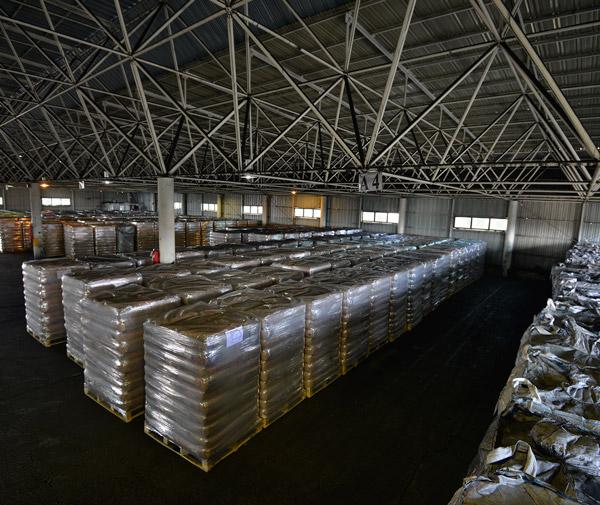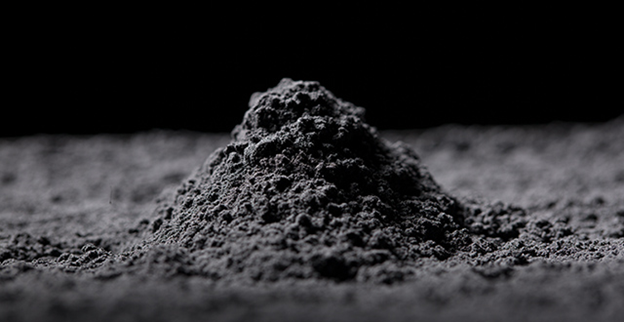Description of Carbon Black:
Carbon black is a very important additive to the rubbers that supports ELASTOMERS to improve mechanical properties. Black is used for light protection, coloring, and increasing the transmission properties.
Decreasing the used rubber amount and its price to achieve mechanical efficiency and increasing operational efficiency as resistance rubbing causes the cost saving.
It is used in a diverse group of materials in order to enhance their physical, electrical, and optical properties.
Its largest volume use is as a reinforcement and performance additive in rubber products.
Carbon Black is a commercial form of solid carbon that is manufactured in highly controlled processes to produce specifically engineered aggregates of carbon particles that vary in particle size, aggregate size, shape, porosity, and surface chemistry.
It is typically contains more than 95 % pure carbon with minimal quantities of oxygen, hydrogen, and nitrogen.
In the manufacturing process, It is particles range from 10 nm to approximately 500 nm in size. These fuse into chain-like aggregates, which define the structure of individual Carbon Black grades.
Applications of Carbon Black:
Besides rubber reinforcement, It is used as a black pigment and as an additive to enhance material performance, including conductivity, viscosity, static charge control, and UV protection.
This type of Carbon Black (typically called Specialty Carbon Black) is used in a variety of applications in the coatings, polymers, and printing industries, as well as in various other special applications.
Actually, after oil removal and ash removal processing from tire pyrolysis, we can get high-purity commercial carbon black, which can be used to make color masterbatch, color paste, oil ink, and as addictive in plastic and rubber products.
Besides, after activation treatment, the carbon black will become good materials to produce activated carbon.
In the coatings industry, treated fine particle Carbon Black is the key to deep jet-black paints.
The automotive industry requires the highest black intensity of black pigments and a bluish undertone.
It has got a wide array of applications in different industries Small particle size Carbon Blacks fulfill these requirements.
Coarser Carbon Blacks, which offer a more brownish undertone, are commonly used for tinting and are indispensable for obtaining a desired grey shade or color hue.
In the polymer industry, fine particle Carbon Black is used to obtain a deep jet-black color.
A major attribute of Carbon Black is its ability to absorb detrimental UV light and convert it into heat, thereby making polymers, such as polypropylene and polyethylene, more resistant to degradation by UV radiation from sunlight.
Specialty It is also used in polymer insulation for wires and cables. Also It also improves the insulation properties of polystyrene, which is widely used in construction.
In the printing industry, It is not only used as pigment but also to achieve the required viscosity for optimum print quality.
Post-treating It permits the effective use of binding agents in ink for optimum system properties. New Specialty Carbon Blacks are being developed on an ongoing basis and contribute to the pace of innovation in non-impact printing.
Applications of soot:
N-220:
This grade is used in passenger tires with its reinforcing properties and high tear resistance and good process capability.
N-234:
This grade with high abrasion resistance and high structure is used in elastomers and SBR / SR alloys.
N-330:
Due to the medium and upward reinforcement properties of this grade and its optimal process capability and moldability, it is used in rubber sides, carcass components, coated compounds, and tire belts.
N-339:
The reinforcement property and high hardness coefficient of this grade, along with its excellent process capability, make it possible to use it to make the middle layer of the tire.
N-375:
Due to its reinforcing properties, high hardness coefficient, and excellent process capability, this soot can be used to make the middle layers of the tire.
N-550:
Reinforcing properties and high hardness coefficient and the ability to form smooth surfaces with this grade has led to the widespread use of this grade in the manufacture of molds and internal structures of tires, wall components, pipes, and hoses.
N-660:
One of the properties of this soot grade is medium reinforcement, and this grade is used to make the inner layers and outer wall of the tire, cable cover, sealing rings, and so on.
N-772:
The properties of this soot grade are low reinforcement, a small building with high jumping power, and it is used in impeller belts, aircraft tires, used in pressure-sensitive parts.
Different Kinds:
Hard/Soft carbon black:
Two types of carbon black are commonly used by the rubber industry for reinforcing rubber.
The first is the so-called hard carbon black which imparts high wear resistance to rubber into which it has been compounded.
Hard carbon black is generally used to make vehicular tire treads. Another type of carbon black, which imparts a different set of properties to rubber, is a so-called “soft” carbon black.
Soft carbon blacks are generally used to reinforce rubber where a great deal of flexing is expected to be encountered, such as in tire carcasses.
Hard carbons are commonly classified as being in the N100, N200, or N300 series. Some carbon blacks are commonly classified as being in the N500, N600, and N700 series.
The processes for making soft and hard carbon blacks differ considerably.
A soft carbon black as compared to a hard carbon black is one which, when mixed in a conventional rubber compound and the compound vulcanized, yields a product which is soft, more resilient, more rubbery, and yet tough; whereas a hard carbon black in the same compound imparts stiffer, tougher characteristics with low resilience.
The “channel” black process, though it produces a hard black, is a very wasteful process as only 3.5 percent of the carbon content of the gas (the feedstock to the channel black process is natural gas) is converted into carbon black. So called “furnace” black uses liquid hydrocarbons and converts a’ much higher content of the carbon to carbon black than does the channel process.
The characteristics of the carbon black produced by the “furnace” type process depend to a large extent, upon the type of liquid hydrocarbon material used as a charge to the process.
It has been found that low API gravity cracked gas oil having a high aromatic content is very desirable as a feedstock for the “furnace” black process.
Safety:
Eye/face protection:
Do not wear contact lenses. For dusty environments use tight fitting goggles with side shields, or wide vision full goggles. It is also advisable to have individual pocket eyewash.
Skin & hands protection:
Wear impervious protective clothing to prevent skin contact. Selection of protective clothing may include gloves, apron, boots, and complete facial protection depending on operations conducted.
Users should determine acceptable performance characteristics of protective clothing. Consider physical requirements and other substances present when selecting protective clothing.
Suggested materials for protective gloves include: No skin protection is ordinarily required under normal conditions of use.
For hands, appropriate protection (e.g. gloves, barrier cream) is recommended for workers who suffer from dermatitis or sensitive skin. Wash hands at the end of each work session.
Respiratory protection:
Local ventilation to keep levels below established threshold values is recommended. In case of prolonged exposure to airborne dust concentrations, a suitable particle filter mask that complies with the requirements of national legislation is recommended, depending on the expected exposure levels.
PHYSICAL & CHEMICAL PROPERTIES:
- Appearance: powder or pellet
- Color: black
- Odor: odorless
- Molecular formula: C
- Molecular weight (as carbon): 12
- Density (20°C): 1.7 – 1.9 g/cm3
- Bulk density: 20 – 680 kg/m3
- 200 – 680 kg/m3 (Pellets)
- 20 – 380 kg/m3 (Powder)
- Solubility: insoluble in water
- pH value: 5 – 10 [20 °C]
- Decomposition temperature: 300 ºC
- Spontaneous ignition (auto ignition): >140 °C
STABILITY & REACTIVITY:
Stability:
Stable under normal ambient conditions.
Conditions to Avoid:
Prevent exposure to high temperatures and open flames.
Incompatible Materials:
Strong oxidizers such as chlorates, bromates and nitrates.
Hazardous Decomposition Products:
Carbon monoxide, carbon dioxide, organic products of decompositions,
oxides of Sulphur form if heated above decomposition temperature.
Hazardous Reactions Polymerization will not occur.
TRANSPORT INFORMATION:
Carbon black is not classified as a hazardous material.
Packing:
Our Carbon Black, packed in 25, 50KG PP bags and 1 mt jumbo bags (Big Bags) for preventing to absorb moisture.




